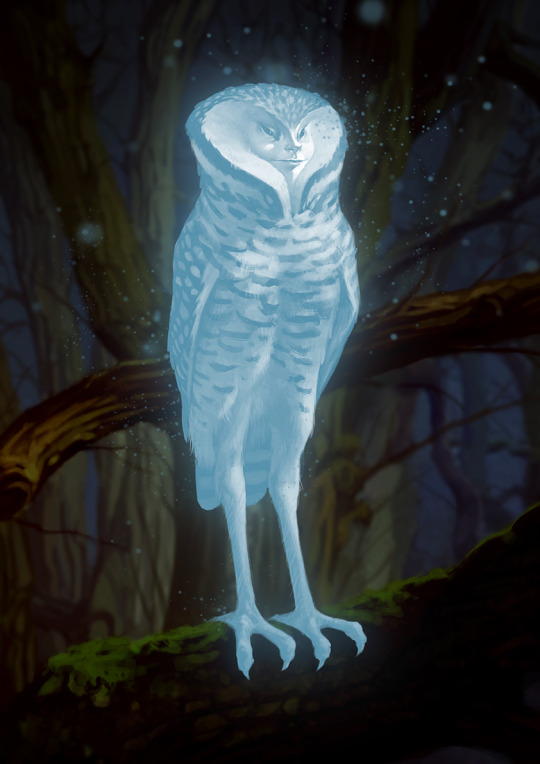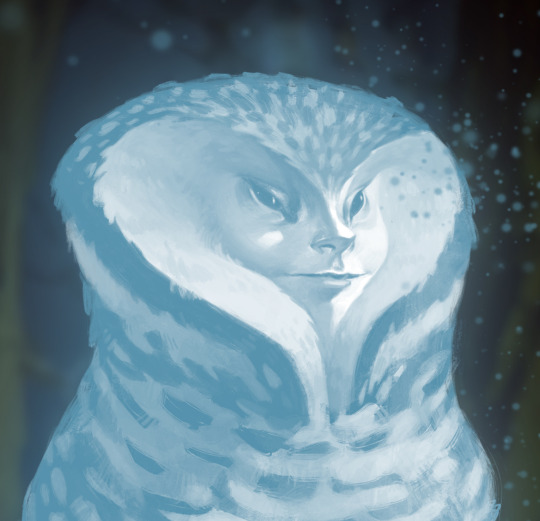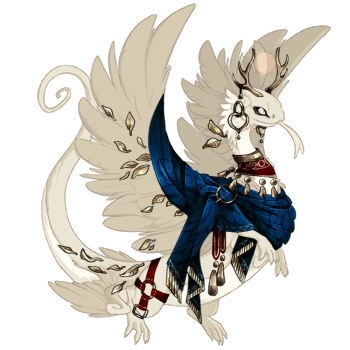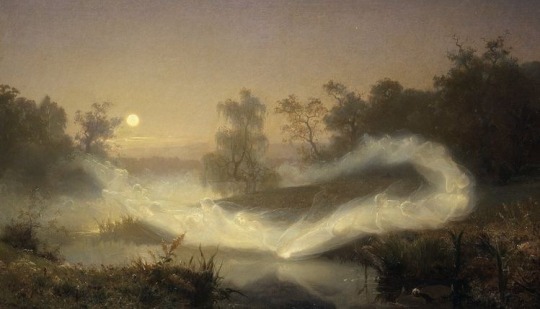#Huldufólk
Text
The huldufólk
The huldufólk are grouped in a classification family with many of the common hill-type faeries of Western and Northern Europe, such as the common brownie. Huldufólk (Icelandic: “the hidden people”) live inside rocks; they are gray colored and wear gray clothing, and like many other hill faeries, they are territorial and easily angered. Even today, Icelanders are cautious and respectful of the huldufólk when they are starting construction projects—if an expert believes a particular rock that is in the way of construction may be the home of the huldufólk, plans will have to be changed rather than destroy or disturb the rock, for fear of bringing the huldufólk’s vengeance upon them. Traditional wisdom also forbids having sex beneath the Northern Lights, explaining that anyone who would be willing to do that with a person is probably one of the huldufólk in disguise, and that any child born from such a union would be a changeling.
Besides their native home, huldufólk are often commonly found in Minnesota, brought across the Atlantic by generations of Icelandic immigrants.
https://www.ancient-origins.net/myths-legends/huldufolk-supernatural-creatures-hiding-iceland-005870
"In the north, there are stories of the Huldufólk, strange and hidden beings who live among us, yet hidden. As the story goes, Adam and Eve had many children. God announced that He would come to visit, and Eve hurried to bathe all of her kids. But she didn’t have enough time, and when God arrived, several of her children were still dirty, so she hid them and told them not to come out. When God looked upon the children, He asked whether these were all of the kids that Adam and Eve had. Eve lied, and said that they had no other children at all. But God knew this was a lie, and claimed that “what man hides from God, God will hide from man”. From that day on, the unbathed children and their later descendants were hidden from mankind. They are described as resembling humans, but more talented, charming and attractive. They are not evil, and there are stories about Huldufólk saving humans from certain death, but there are also tales about people incurring the wrath of the Huldufólk. One such story is about the road to Hvalfjarðargöng underneath the Hvalfjörður fjord. During construction, everything kept going wrong, like construction equipment constantly breaking. When a worker died in an accident, people turned to a local woman who claimed to be in contact with the Huldufólk. She said that there was a Huldufólk village in the location where the road was being constructed, and that was why the construction workers were having so many troubles. The beings had already found a location for a new village and were already moving, but they needed more time. Thus, construction was halted until the local woman told them that the last of the Huldufólk had moved. When work on the road was resumed, no further accidents occurred. This happened in 1999, by the way, it’s not an ancient tale."
https://yourfriendinreykjavik.com/elves-of-iceland/

6 notes
·
View notes
Photo

Urkraftens kvinnor, Internationella kvinnodagen 2023. Mina sagors kvinnor, som leder särskilt de som jag kallar för vildfolk. Från skogsrå till vättar. Och nu leder mina sagor som ni kan se här. https://www.youtube.com/channel/UCaV7-9fIKAP4FaMHlqSucpA https://www.facebook.com/Svartabergetart/ #huldra #elf #internationalwomensday #women #goblin #sagor #shaman #sweden #järna #huldufólk #illustration #digitalart #conseptualart #conseptart #summer #savage #folklore #storytelling (på/i Trollgrottan) https://www.instagram.com/p/Cph4qTyILa_/?igshid=NGJjMDIxMWI=
#huldra#elf#internationalwomensday#women#goblin#sagor#shaman#sweden#järna#huldufólk#illustration#digitalart#conseptualart#conseptart#summer#savage#folklore#storytelling
0 notes
Photo

Yoshimi Saito Ceramics - Huldufólk https://youtu.be/3mf0UI5CgzY アイスランドで作った陶芸作品を動画にまとめました。 どこで作品展示をさせてもらえるだろうか?と考えた挙句、動画を作ってオンライン展覧会をすることにしました。動画であれば世界中どこからでも見てもらえるのでいいかなと思いました。実際に手に取って見てもらうことができないのはもどかしいですが、今回動画を撮る際に、作品を手に乗せたりして、サイズ感も多少わかるようにしたので、ぜひご覧いただければ嬉しいです。2月には作品販売も予定しています。 #hiddenpeople #huldufólk #iceland #artistinresidence #ceramics #ceramic #art #yoshimisaito https://www.instagram.com/p/CoCf1R1SiGu/?igshid=NGJjMDIxMWI=
0 notes
Text
Please be obsessed like I am
1 note
·
View note
Text
SKÁLD mit neuer Single “Troll Kalla Mik” und neuem Album “Huldufólk”
SKÁLD mit neuer Single “Troll Kalla Mik” und neuem Album “Huldufólk”
Das französische Neofolk-Kollektiv Skáld veröffentlichte kürzliche ihre neue Single “Troll Kalla Mik” und kündigt zeitgleich ihr neues, drittes Studioalbum namens “Huldufólk” an. Zur Single gibt es weiter unten ein Musikvideo zu sehen. Mit 245.000 verkauften Alben und einer treuen Streaming Gemeinde beweisen sie, dass sie nicht nur Wacken rocken können! Zwei Jahre sind seit ihrem letzten Album…
youtube
View On WordPress
0 notes
Photo


‘owl’
https://www.instagram.com/_udnua_/
#owl#faeries#huldufólk#fantasy#mythical#conceptart#characterdesign#illustration#forest#night#littlepeople#digitalpainting#udnua
1 note
·
View note
Photo

#halloween #pinklady #cape #icelandichorse #islandpferd #elf #misticalcreature #icelandicfolklore #hiddenpeopleiceland #hiddenpeople #huldufólk #þjóðsögur (at Reykjavík, Iceland) https://www.instagram.com/p/CkRU618ocx9/?igshid=NGJjMDIxMWI=
#halloween#pinklady#cape#icelandichorse#islandpferd#elf#misticalcreature#icelandicfolklore#hiddenpeopleiceland#hiddenpeople#huldufólk#þjóðsögur
0 notes
Text
Tall Tales of Iceland
Tall Tales of Iceland

View On WordPress
#Althing#Ásbyrgi#Christianity#Dimmuborgir#Eyjan#Goðafoss#Hljóðaklettar#Huldufólk#Husavik#Hvitserkur#Iceland#Jökulsárgljúfur#Museum of Sorcery & Witchcraft#Myvatn#paganism#Thingvellir National Park#Yule Lads
0 notes
Text
CELTIC HILLS Release Video 'Metal Message' from New Album "Huldufólk"
CELTIC HILLS Release Video ‘Metal Message’ from New Album “Huldufólk”
Photo-edit by Pino Magliani
Italian legendary Speed/thrash metallers CELTIC HILLS unleashed their highly anticipated new album “Huldufólk” on April 1st, via Elevate Records, which is receiving praising reviews from worldwide media, and only in a couple of weeks it had gained more than 600,000 listeners on Number1 Music!
Today the band has released a new official lyric video ‘Metal Message‘ from…

View On WordPress
0 notes
Text
Thinking about trolls (+elves, huldufólk, others) in light of Eduardo Vivieros de Castro. I'm not willing to say that pre-Christian Scaninavians were perspectivists in Amazonian style, but I do think that looking at Norse religion and later Nordic folklore through that lens is productive.
I'm mostly using the word troll as kind of a catch-all (which is not unlike how Scandinavian folklore uses it, though Icelandic folklore does not).
There are two main fears concerning trolls: that they will eat you, and that they will marry and/or fuck you. In Levi-Strauss's time that might have been seen as symbolically reducible to the same fear, but I think we can learn more by examining them in their distinction.
I dunno that I can summarize Vivieros de Castro's points here, but I'm reading from Cosmological Perspectivism in Amazonia and Elsewhere: Four Lectures given in the Department of Social Anthropology, Cambridge University, February-March 1998.
In western ontology we humans are like animals in that we have bodies, but what distinguishes us is the soul (or the rational mind, or whatever, the details change over time but the point is something distinctive about our interiority), so that for, say, Christian missionaries, "because the spiritual is the locus of difference that
conversion becomes necessary (the Europeans wanted to know
whether Indians had souls in order to modify them)." Sverrir Jakobsson says that Icelanders bought so heavily into the [Christian : Heathen] distinction as the primary ordering principle of the peoples of the world that they had trouble recognizing, or even outright denied, that there was an East-West split in Christianity.
In perspectivist ontologies this is flipped, the locus of differentiation is the body, because the interiority of everything is the same, difference comes from inhabiting different bodies. If you could acquire the sight of a jaguar, you would look at a puddle of blood and see a nice cold beer (but you would also be dangerous to humans, because you would see them as game animals). The resulting anxiety is cannibalism. If everything is the same in underlying essence, it becomes necessary to engage in an active practice of differentiation to avoid eating something that is the same as you. Ritual specialists who can transform into animals are sometimes bad hunters because they are too deeply engaged in this paradox.
The fear of marrying a troll (or elf, whatever) is the fear of spiritual conversion. This is sometimes made explicit: "I don't want to live with elves; rather, I want to believe in my Christ" -- Ólafur Liljurós (note that while this ballad is related to similar ones all over Europe, many of them deal with the protaganist's impending marriage and/or infidelity in some way; this is absent from the Icelandic and it's a purely religious conflict). In Tungustapi, Sveinn doesn't just fuck elves, he also goes to their church (which is a sort of inverted Christian church). He's alienated from the [Christian/human] community. This corresponds to "western ontology."
The other side of this is fear of being eaten. At risk of overthinking things, because being afraid of a scary monster eating you doesn't really seem to need a lot of explanation, I think there are religious/cosmological implications here.
The fear of being eaten by a troll is different from the fear of being eaten by a bear or a boar, because humans also eat bears and boars, we are on the same level with them. You can't eat a troll (we also don't eat wolves, and wolves are trolls' domestic animals, although I guess you could eat a wolf). A semi-human semi-Euhemerized jötunn/troll is associated with cannibalism in Orms þáttr Stórólfssonar. I've written before about the likely etymological derivation of jötunn from a word meaning 'to eat'; previously I said that while *etaną 'to eat' and *etunaz 'jötunn' have a clear etymological relationship, that might not be so a few hundred years later when they have become eta and jǫtunn, but maybe this relationship should be reconsidered.
Eduardo Kohn was once told to always sleep on his back in the jungle, because if a jaguar comes it will see his face and recognize him as a person, but if it sees his back it will see him as prey. To avoid being eaten by a troll you have to get the troll to see you as a person and not as food, you can do this by giving a gift (and initiating a relationship of reciprocity), or else by being more troll-like yourself (maybe even by preestablished kinship with trolls like Egill Skallagrímsson). It's a widely-acknowledge attribute of trolls, at least in Iceland, that if you do manage to get them on your side they are loyal, hence the word trölltryggur 'trustworthy as a troll [=extremely trustworthy].'
The alternate way to avoid being eaten is, of course, to pray to [Thor/St. Olav] to come destroy them with his [hammer/axe]. I don't think this throws off what I'm saying here though, because "extreme violence" is also an option for dealing with humans in a reciprocation-exchange relationship too.
Anyway, my point is that the responses to the two different fears are the exact opposite of each other. You respond to the fear of conversion by never associating with trolls, never falling for the deceit that they are persons like you. You respond to the fear of being eaten by trolls by establishing mutual recognition of each others' personhood.
Contrary to popular belief (which says to never accept any gift from the fey under any circumstances), both of these are represented in folklore. Ólafur Liljurós even presents both of them at the same time, and says it's better to be killed than convert.
There's a big gap in this, which is magical creatures that don't want to eat you but which are still dangerous. e.g., an elf is not going to eat you but you still don't want to piss him off because he'll shoot you with a disease-transmitting arrow. But I think this can get filed along with the fear of being eaten, it's just that because the Eduardos (Vivieros de Castro and Kohn) are themselves talking about cosmological food chains, and I'm working from their material, there's better opportunity for examining trolls that eat people.
150 notes
·
View notes
Text





huldufólk by jackaling. A 5-print Coatl M custom.
(auction thread)
#flight rising#fr skins and accents#fr skin sales#currently selling a copy with a sb of 4kg#never sold a custom before so idk if thats a good starting price#i love this accent though so i might not sell another copy#if the auction fails tho i'm open to offers#feel free to shoot a pm
46 notes
·
View notes
Text
Every single one of these is something I've seen while trawling Ao3 for Sportarobbie fics. Every. Single. One.
...Admittedly, the tail was only in one fic (that I've seen...), but the others have all made multiple appearances, and some (like the ears) are popular fanon.
17 notes
·
View notes
Note
Hi! I saw your post on the alfar (and land spirits in the context of heathenry). I was wondering if you might know of or want to share some more facts specifically unique to the Alfar? I’m really interested in them because there’s been a lot of debate I’ve seen on where they differ from the Irish fair folk and where they are similar. When I first learned about norse mythology the book I read depicted them very similarly to Irish faeries. But now I’m wondering based on your last post if that book’s depiction was misleading? UPG is acceptable too! If you have any experiences with them.
Hi there! Thanks for coming to me with your question! It really is a nuanced and interesting topic, which is why I wanted to make a full post out of this. I've actually mean to post about álfar for a while, so I guess now’s my chance! However, the sources we have concerning them aren't many, which makes it quite difficult to describe them, or the way the were regarded in pre-christian germanic societies. What we can say for sure is that they are supernatural beings tightly linked to nature, and that the norse álfar are actually the oldest known elves. They could be nature spirits, or even gods! That last possibility is due to their being constantly called "Vanir" in at least one piece of norse poetry. They are also associated with death, since king Olaf Geirstaðir was said to have become an elf after his passing, roaming around in his burial mound. Indeed, elves are said to dwell in burial mounds, and they are sometimes called “mound-dwellers”. This partly explains the álfar’s association with ancestors, but more on that later. Depending on the tradition, they can also inhabit forests, the sky, bodies of water and such. In Iceland, mountain elves are called Huldufólk, or “hidden people”. As you can see, the very definition of “elf” in the norse pagan sense is already hazy! So let's dive in a little deeper, shall we?

Snorri Sturluson divided the álfar into two groups: the ljósálfar and the svartálfar. According to him, the first were "light elves" and the second, "dark elves". Both these groups are said to be very skilled at magic and/or smithcraft. However, the svartálfar are often called dwarves and are said to live in Svartálfheimr, one of the nine worlds. It is also said that they would turn to stone if exposed to sunlight. The ljósálfar as Snorri describes them are a lot closer to the way we are used to picturing elves: luminous (they are associated with the sun), beautiful, etc. They are allies of the Æsir and it was conjectured that the God Yngvi-Freyr is their ruler. The reason for this is that Freyr is said to dwell in the world of Álfheimr, homeland of the elves, and his name is often preceded by Yngvi, meaning “lord" or "king". As a biased heathen, I can say that Freyr being ruler of the elves is pretty much SPG, even though it was never explicitly proven why such a belief was around before and during the Scandinavian iron age.

Now, it isn't certain the germanic peoples even made a distinction between these "light elves" and "dark elves", or even between them and jötnar or landvættir. The differences in the way these beings were perceived all depend on the era, the social class and the area. There is evidence of specific álfar worship, however. The Álfablót was a type of sacrifice made to álfar at the end of autumn, when every crop had been harvested. Their worship often overlapped with that of the ancestors, the dísir and/or Freyr. According to folklore, elves can be seen dancing (“älvdanser”) over meadows, sometimes at night and sometimes on misty mornings. According to folklore, watching them dance would make you lose years of your life within minutes. Their dancing would leave circles called älvringar ("elven rings"). Disrespecting these rings would bring about terrible consequences, such as illness. Though they are generally considered forces of good, or at least light, their role in norse myths and stories can be that of antagonists. In the Völundarkviða for example, one the most famous elven character appears: Völund (or Wayland) the Smith, a famous craftsman who, after being wronged by a king, exacts a cruel revenge upon him by killing his sons. Völund is very popular in oral tradition and he's actually quite the complex character, showcasing features of both Snorri's "light elves" and "dark elves". He is peaceful but he can also be wrathful and merciless. The latter trait seems to fit with scandivanian folklore, according to which elves are capable of causing illness. This duality is also present when it comes to the álfar’s other magical influences. It is said they cause both fertility and sterility.

As Christianity spread in Europe, the elves were either demonized or turned into angels, just like Snorri had done to separate the “good elves” from the more mischievous ones. Still, it seems no incarnation of the elves was ever truly good or truly bad. Most of them are, at least according to me and many other norse mythology enthusiasts, morally grey beings who can both aid and punish. I know this makes them all the more akin to the Irish fair folk, but the major difference between these two mythological beings is the way they are interacted with. Nonetheless, there are very little sources on how the álfar were worshipped historically. Since this worship is performed in vastly different ways within neo-pagan circles, it’s hard to list precise álfar worship rituals. Some of us present them with water, tea, herbs, local fruit or reapings from our gardens, as well as coins, ribbons, flowers, etc... Personally, the hörgr is an integral part of my relationship with the elves. Since it’s outside, it simply feels natural to make my sacrifices to álfar above it. Plus, sacrifices to them used to be made in boulders or stones with cup-like cavities, which were said to be elf-homes and have healing powers. People tend to honor them at the end of autumn and/or at equinoxes, since the latter are times of natural balance. Those are pretty much the basics of human-álf interaction!
I hope this answered you question well! It’s probably too long and detailed of an answer, so I’m sorry about that, I couldn’t help myself. Wishing you a great and peaceful day!

#alfar#elves#Freyr#norse mythology#norse paganism#norse myths#mythology#norse polytheism#polytheism#paganism#heathenry#ask#asks#spirits#spirit work#land spirits#elf
122 notes
·
View notes
Photo

_______________________________ Huldufólk #22 L 5.7 cm, W 3.5 cm, H 2.5 cm _______________________________ アイスランドで作った陶芸シリーズ、22体目です。針を使って、石のような質感を作りました。 アイスランドシリーズは、2月にオンラインで販売予定です。現在準備を進めています。 I’m preparing for selling these ceramic series online hopefully in February. #hiddenpeople #huldufólk #iceland #artistinresidence #ceramic #art #yoshimisaito https://www.instagram.com/p/Cn9eAu9SlEk/?igshid=NGJjMDIxMWI=
0 notes
Text
i want to study at an Icelandic university
i will spell color as litur and use gráður á selsíus. i would watch Lazytown on RÚV all night while drinking a malt og appelsin with my herbergisfélaga. i’ll have hot dog every day that’s worth 500 króna. i would go for an ísbíltúr every night. i am also more likely to meet huldufólk, Sigur Rós, Björk and the President.
21 notes
·
View notes
Note
I really want to know more about your headcanons about magic and the supernatural aspects of hws if I can bother you for them! (draw-a-circle-thats-the-compass)
I tend to treat the nations as a sort of go-between for humans and mythical creatures.
Nations, as a concept, are made up by humans. At the end of the day the land is just land. Linguistic and cultural communities are fluid and move around and exchange information naturally without a need for borders and nationality. A country has no more tangibility in the real world than a mermaid or a dragon. The difference is that unlike mermaids, who are usually relegated to children's books, humans have a habit of trying to enforce nationality through structure - they write laws that they enforce with police and militaries, they draw lines on maps, and distribute resources and violence based on who they've arbitrarily decided is or isn't a citizen.
So in Hetalia, in a world where fairies are real, and every country has its own representation, the nations have been forced into a sort of liminal space between the tangible and the mystical. And where each individual nation falls in that space differs.
While all nations are somewhat supernatural, some nations, the ones we see use magic and interact with mythical creatures in canon, have leaned into that mysticism to the point that they take on aspects of their culture's mythology. Vlad has little vampire fangs because he is a vampire. Arthur's love for the sea and sailing is a result of the fact that he and his brother are all part selkie. Of course, Emil would never acknowledge publicly that he can see magical creatures, he's a huldufólk, it only makes sense to hide his more mythic qualities.
Other nations have adjusted over the years to be a little more human in nature. Even Jack's more supernatural abilities are mostly just a case study in why immortals shouldn't be left alone on an island full of poisonous animals, and if the good neighbors show up on occasion that's really none of his business. Feliciano loves Roman mythology because it reminds him of his grandpa, but at the end of the day, he's a good catholic boy who happens to run at inhuman speeds.
Some nations *cough* Alfred *cough* are in some pretty serious denial about just how supernatural they really are, and if they're just a little too strong even by nation standards, or if the corn in a field parts for them to walk by it, then thats just gods gift to them and there's no reason to question that at all is there?
I also think mythical creatures existing canonically in Hetalia is really interesting because presumably, they all live longer than humans. Even the nations that fall on the more human side of things probably have some sort of relationship with their culture's mythological creatures (except for Alfred who is far too rational to acknowledge the things he can see with his own damn eyes) because those creatures will have a life span much more similar to their own. Building relationships with the supernatural hurts less, there is less of a deadline involved, and a friendship with a supernatural being is something a nation might actually be able to rely on long-term even when they don't have other countries around to support them.
#thanks for the ask!#hws romania#hws england#hws iceland#hws veneziano#hws australia#hws america#hetalia#aph#thanks for sitting through my Anarchist Theory Meets Hetalia nonsense#I'm aware that I have brain worms
97 notes
·
View notes